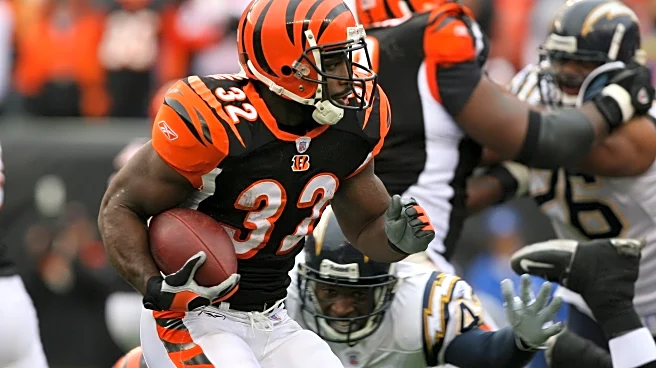What's Happening?
Rudi Johnson, a former Pro Bowl running back for the Cincinnati Bengals, has died at the age of 45. His death is being investigated by the Miami-Dade Sheriff's Office, with authorities indicating it may be a suicide. Johnson was known for his impressive career with the Bengals, where he set multiple records and was a three-time 1,000-yard rusher. His agent, Peter Schaffer, has called for increased research and resources to address chronic traumatic encephalopathy (CTE), a brain disease linked to repeated head injuries, which is suspected to have played a role in Johnson's death. Johnson's passing has prompted discussions about the need for better support and prevention measures for athletes dealing with CTE.
Why It's Important?
The death of Rudi Johnson highlights ongoing concerns about the impact of CTE on athletes, particularly those in contact sports like football. CTE has been linked to numerous cases of mental health issues and suicides among former players, raising questions about the safety and long-term health implications of the sport. Johnson's agent's call for more research and innovation in treating CTE underscores the urgency of addressing this issue to protect current and future athletes. The NFL and scientific community face pressure to develop better diagnostic tools and preventive measures to mitigate the risks associated with repeated head trauma.
What's Next?
The investigation into Johnson's death may lead to further scrutiny of the NFL's handling of CTE and player safety. There could be increased advocacy for policy changes within the league to enhance player protection and support. Additionally, Johnson's death may spur more research initiatives focused on understanding and combating CTE, potentially leading to advancements in medical treatments and preventive strategies. Stakeholders, including players, teams, and health professionals, are likely to engage in discussions about improving safety protocols and support systems for athletes.
Beyond the Headlines
Johnson's death brings attention to the ethical responsibilities of sports organizations in safeguarding their players' health. It raises questions about the cultural acceptance of high-risk sports and the balance between entertainment and athlete welfare. The long-term implications of CTE research could influence how sports are played and regulated, potentially leading to changes in training methods, equipment standards, and game rules to prioritize player safety.











